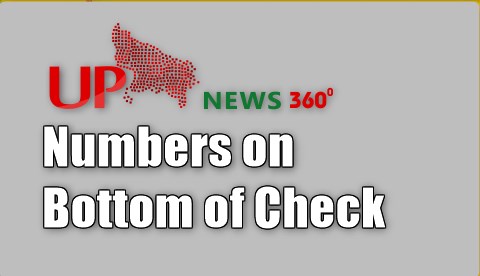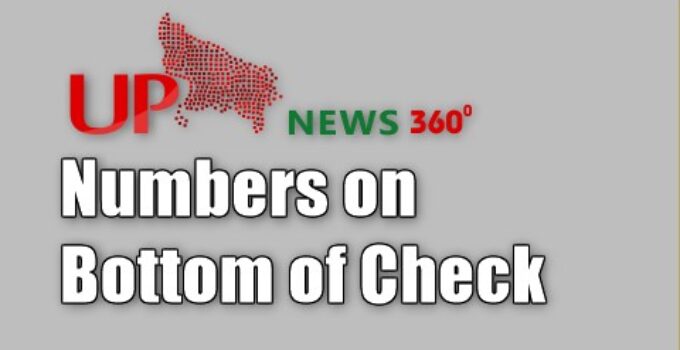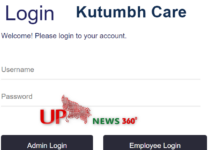Account Numbers On Bottom of Check
How to numbers on bottom of check online? Opening a checking account has numerous advantages, which are generally detailed in booklets provided by the bank. There are many benefits, but it’s easy to forget that a physical examination needs to be explained as well.
Bank computers can read the numbers printed at the bottom of personal checks because of the font used. Because these numbers display account information and can help identify fraudulent checks, account holders should be aware of their significance to their accounts. Also you can know about how to pending deposit disappered as well.

Numbers on Bottom of Check
For many people, writing a check is second nature. They have been doing it for years, and it is a simple process. Put the date in the upper right-hand corner, write out the recipient’s name and address on the “Pay to the order of” line, fill in the dollar amount both numerically and in words on the appropriate lines, sign the check on the “Sign Here” line, and you’re done. But there is one more step that is often overlooked: writing your account number on the bottom of the check.
What is the Purpose of a Routing Number & What Does it Mean?
In the lower-left corner of your check, you’ll find the routing number, which is the first set of four digits. 9-digit routing numbers are used to identify the financial institution affiliated with your account and are also known as ABA numbers.
The routing number on a check does not include the character sign that surrounds the numerals. Route numbers might be found on a billboard or in a newspaper. Routing information for Bank Five Nine can be found at (075902421).
In the right-hand corner of the footer of our website, you’ll discover the routing number.
Where Can I Find Check’s Routing Number?
The bottom left corner of a check will have a series of nine-digit bank codes, including your routing number. Each bank has a unique routing number that allows them to identify the location of the checking account.
The routing number is used to identify your bank, therefore each financial institution, such as Huntington, is assigned a unique routing number to identify your account. Direct deposit, electronic checks, and electronic bill payments are all examples of transactions that can be made using this code.
Account Number
The routing number is on the left, while the account number is on the right. The check’s routing number lets you know which bank issued the check. The length of a bank’s account numbers can influence the number of digits used. An apostrophe-like symbol appears at the end of this number.
Where is Account Number On Check?
Your account number is the second set of numbers from the left on the bottom of your checks, and it has a length ranging from 9 to 12 digits. This number tells the bank where the monies should be withdrawn.
As a last resort, you can locate your account number by going to Huntington’s online banking site and entering your bank account number. Visit a Huntington bank and present an acceptable ID to obtain your account number.
The first nine digits of the cheque
Computers didn’t invent these numbers. An American Bankers’ Association initiative in 1910 produced the first nine digits of your routing number to make check processing easier and safer. Routing numbers have been supplemented by the addition of a Federal Reserve number to indicate the type of institution and Federal Reserve district where an account was opened.
By using routing numbers, it is possible to determine who is actually responsible for honoring your check and to verify that your recipient receives your money.
The Next Eight Digits
Your account number is here. It’s similar to routing numbers in that they tell you where a bank account resides and which account to debit.
The Last Four Digits
The last four digits on checks are sequential, so keep an eye out for this detail. It’s important that the check numbers on both of them match exactly.
You may be wondering why we still use these numerals because they predate computers. Regardless of whether or not a physical check is used, these numbers identify the bank and the account for each transaction. To make an online bill payment through a vendor’s website, you will need to provide these details. To ensure that a digital payment you receive from a friend is properly deposited into your account, you’ll need to know these codes.
Where to Find Account Number: On the Bottom of the Check
If you need to know your account number for online banking or to set up direct deposit, look at the bottom of your check. Your account number is usually the longest number on the bottom of your check, and it’s often followed by your routing number. If you don’t have a check handy, you can also find your account number on your monthly statement.
Why Account Number is Important
The account number is the key to identifying which check belongs to which bank account. The account number is also important for businesses that process a lot of checks, as it helps them keep track of where the money is coming from and going to.
Finally, the account number helps businesses and individuals reconcile their records at the end of the month or year.
Conclusion
Routing numbers were introduced in 1910 by the American Bankers Association, however, checks have been used for debt payment since antiquity. As the banking system expanded across the country, routing codes were created to help identify the locations where checks were being processed. Aside from their original use, routing numbers and numbers on bottom of check are now utilized to facilitate electronic checks and online bill payment, as well.
Table of Content




